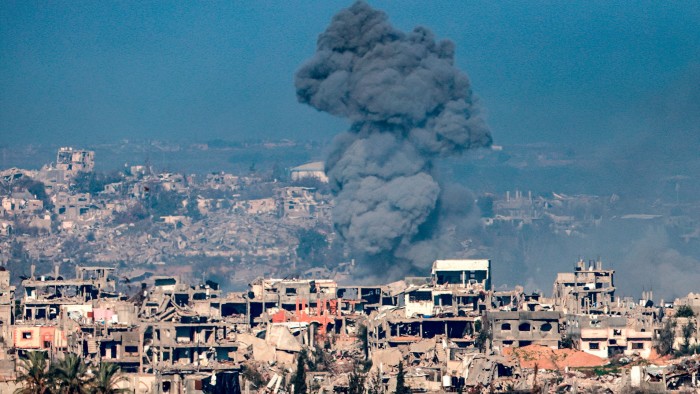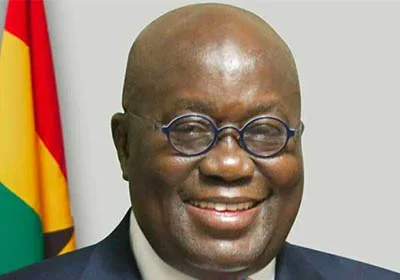
By Adeyemi Adekunle
In a significant diplomatic development on Monday, negotiators unveiled the final draft of a ceasefire and hostage release agreement aimed at ending the prolonged war in Gaza. The draft was presented to both Israeli and Hamas officials following a late-night breakthrough in talks, marking a pivotal moment in what has been a contentious and volatile conflict.
Mediators confirmed that a final draft was delivered by Qatar, with the chiefs of Israel’s Mossad and Shin Bet intelligence agencies, along with Qatari officials, participating in the high-level discussions. This breakthrough comes after prolonged negotiations, aided by envoys from both outgoing U.S. President Joe Biden’s administration and President-elect Donald Trump’s transition team. U.S. Secretary of State Antony Blinken highlighted that the sides were “closer than we’ve ever been” to securing a deal, adding that the remaining negotiation points were in the hands of Hamas.
President Biden, speaking from Washington, expressed optimism about the potential for peace, citing the proposed deal as a culmination of months of hard work to restore stability to the region. Biden emphasized that the agreement would not only release hostages but also implement a ceasefire, which would help Israel achieve greater security while also significantly ramping up humanitarian aid to the Palestinian population, many of whom have suffered as a result of the conflict.
The breakthrough marks a shift in the dynamics of the negotiations, which have seen various factions vying for leverage over the last few months. Biden described the hostages’ release as a central element of the proposed deal, stressing its significance for both the U.S. and the Israeli government. Israeli officials indicated that the deal could result in the release of as many as 33 hostages currently held by Hamas, offering a glimmer of hope for families whose loved ones were captured during the fighting.
U.S. diplomats are hopeful that the deal, which aligns with the framework Biden first proposed in May, will be a cornerstone of his foreign policy legacy. The agreement represents not only a victory for U.S.-led diplomacy but also for international cooperation in dealing with one of the world’s most enduring conflicts. The intense involvement of both Biden and Trump-era officials in the process reflects the bipartisan nature of efforts to bring the conflict to an end, underscoring the global imperative of achieving peace in Gaza.
On the ground, the implications of the proposed deal are already stirring mixed reactions. While there is cautious optimism from some sides, others remain deeply skeptical about Hamas’ commitment to ceasefire terms. Many on the Israeli side see this as a critical moment to secure the return of hostages, while security remains a top priority for all parties involved. At the same time, humanitarian concerns, particularly for the Palestinian people who have faced a worsening crisis under siege and bombardment, have remained at the forefront of discussions.
Following the Monday negotiations, another round of talks is set for Tuesday morning in Doha, Qatar. U.S. diplomats, including Trump’s Middle East envoy Steve Witkoff and Biden’s envoy Brett McGurk, are expected to play pivotal roles in finalizing the remaining details, with eyes now firmly fixed on whether a long-awaited agreement can finally be secured. The Qatar-based negotiations reflect a major diplomatic push by Arab states to leverage their influence in pushing for a sustainable resolution.
As negotiators focus on the final hurdles, it remains to be seen whether Hamas will meet the deadline for a formal agreement.
U.S. Secretary of State Blinken made it clear that while the sides have made substantial progress, it is now up to Hamas to demonstrate its commitment to peace. “The ball is in Hamas’ court,” Blinken noted, underscoring the tense atmosphere surrounding the final phase of the negotiations.
For all those involved, the potential ceasefire marks more than just a break in hostilities; it is a moment of redemption and survival for civilians caught in the conflict.
The expected release of hostages, particularly high-profile individuals and individuals who have endured significant hardship, is seen by many as the first critical step toward establishing a fragile peace. Moreover, the humanitarian element of the deal, which promises greater aid access to Palestinian civilians, will have long-term implications for rebuilding Gaza and addressing the humanitarian disaster.
For world leaders, the success of the Gaza truce negotiations is seen not only as a necessary step for securing the region’s future but also as a reflection of global diplomatic capabilities.
While the talks remain on a knife-edge, the comprehensive diplomatic efforts spanning multiple administrations underscore the global importance of resolving the crisis.
As negotiations enter the final stages, the fate of Gaza hangs in the balance, with the world watching closely for signs of peace following one of the most intense and damaging conflicts in modern history.
While significant hurdles remain, the unprecedented level of diplomatic engagement provides the region with a real chance for stability and rebuilding in the months and years to come.




